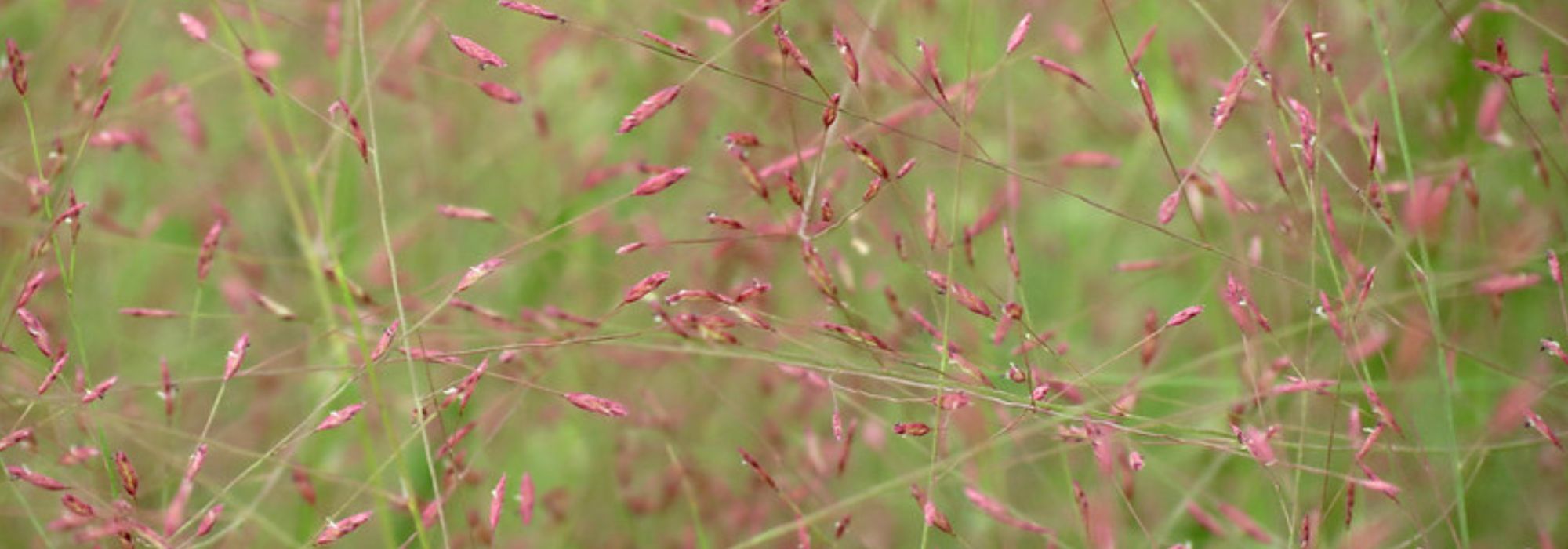
Eragrostis - Love grass: planting, growing and caring
Contents
Eragrostis in a few words
- Eragrostis is an elegant perennial grass with ethereal flowering
- The plant forms a dense clump of fine evergreen leaves in mild climates, deciduous elsewhere
- Love grasses tolerate drought well
- These grasses thrive in all well-drained soils, even poor ones
- Eragrostis are perfect in perennial beds, borders, or pots
The word from our expert
If you’re looking for a stunning, easy-to-care-for, and highly drought-resistant grass: Love Grass or Eragrostis will surely delight you. This grass has a slightly drooping habit and grows in dense clumps. But it’s the flowering of Love Grass that is truly spectacular. Between July and October, clumps of leaves emerge with large, misty panicles in amethyst pink (Eragrostis trichodes), purplish pink (Eragrostis spectabilis), or even almost black (Eragrostis curvula). Additionally, Eragrostis curvula treats us to beautiful bronze foliage in autumn.
The genus Eragrostis is quite extensive and widely distributed around the world. Most species are annuals, but it’s primarily the perennials from the sandy plains of America that interest us in the garden. They are hardy and highly resistant to diseases and drought.
These grasses are easy to grow in full sun and in any soil, as long as it is well-drained. Love grasses can be planted in a wild meadow, a perennial border, along edges, on slopes, and even in pots. A virtually indestructible plant that also has the good grace to self-seed without becoming invasive. It’s clearly one of the most charming grasses to welcome into your garden.
Botany and description
Botanical data
- Latin name Eragrostis sp.
- Family Poaceae
- Common name Love Grass - Eragrostis
- Flowering July to October
- Height 50 to 90 cm
- Sun exposure sun
- Soil type dry and sandy, even poor
- Hardiness -20°C
The Eragrostis belong to the Poaceae family, formerly known as “grasses”. The genus includes around 350 species, often annual but sometimes perennial, distributed across the globe. The genus name Eragrostis is a contraction of Eros (love) and Agrostis (grass): hence the vernacular name Love Grass or Grass of Eros. Eragrostis or Love Grasses are grasses that thrive mainly on disturbed, poor, or sandy soils.
Eragrostis forms dense, tufted clumps, with a weeping, fountain-like habit. The foliage consists of long, very fine green leaves. The foliage is typically evergreen in mild climates, but most often it dries out or disappears entirely in winter. Note that while the foliage of most species remains green in autumn, it turns bronze-yellow in the case of Eragrostis curvula.
The inflorescence reaches over a metre in height between July and October (depending on the species) and forms a mist of panicles with small, flattened spikelets ranging in colour from green to pink to purple, almost black in some species. The inflorescences can be used in bouquets, as they last a long time.
Eragrostis can be grown in perennial borders, as ground cover, in borders to highlight a bed, to cover a slope, in dry rockeries or wild meadows, and even in pots.

Eragrostis spectabilis
Our most beautiful varieties
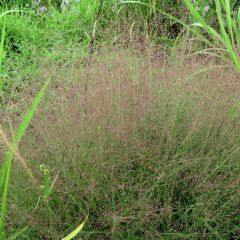
Eragrostis spectabilis
- Flowering time September to November
- Height at maturity 70 cm
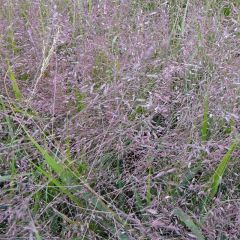
Eragrostis spectabilis Great Plains
- Flowering time September to November
- Height at maturity 50 cm
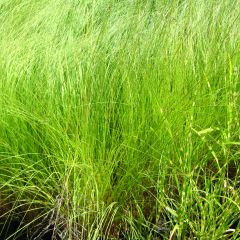
Eragrostis curvula
- Flowering time August to October
- Height at maturity 60 cm
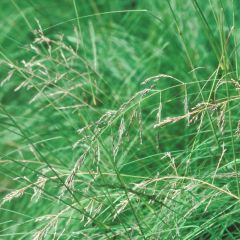
Eragrostis trichodes
- Flowering time August to October
- Height at maturity 90 cm
Discover other Eragrostis
View all →Available in 2 sizes
Available in 1 sizes
Available in 2 sizes
Available in 1 sizes
Planting Eragrostis
Where to Plant?
In their natural habitat, love grasses thrive in poor, sandy, and rather dry soils. In the garden, Eragrostis will grow in any soil as long as it is well-drained. These grasses tolerate drought remarkably well once established.
Love grasses should be planted in full sun.
When to Plant?
Eragrostis should be planted in spring: between March and May.
How to Plant?
- Loosen the soil well to a depth of about 20 centimetres;
- Remove the plant from its pot;
- Dig a hole roughly twice the size of the root ball;
- Love grasses require well-drained soil: feel free to mix in some gravel or clay pebbles with the soil used to fill the hole;
- Place the root ball in the centre of the hole;
- Fill in with the excavated soil (optionally mixed with gravel if the soil is too compact) and lightly firm it around the clump with your fingers;
- Water to eliminate any potential air pockets between the soil and the roots.
Note: space your clumps 80 cm apart to allow them to develop properly.
You can also plant Eragrostis in a pot. In this case, choose a porous terracotta pot with a drainage hole. Fill the bottom with clay pebbles, and the substrate should be well-draining: a mix of half compost and half river sand will work well.

Eragrostis spectabilis and curvula
Maintenance
This ornamental grass requires very little maintenance.
Every 3-4 years, if the centre of the clump starts to dry out: you can lift it from the ground, remove the dead parts, and divide the clump. All that remains is to replant the different sections.
Don’t forget to water it during the first summer, especially during heatwaves. After that, the plant will manage on its own.
If the foliage dries out in winter but doesn’t disappear, it should be cut back in March before the growing season resumes.
In pots, water when the substrate is dry. Repotting should be done when the roots emerge from the drainage hole and in spring.
Diseases and Pests
The Love herb is not attacked by any disease or pest.
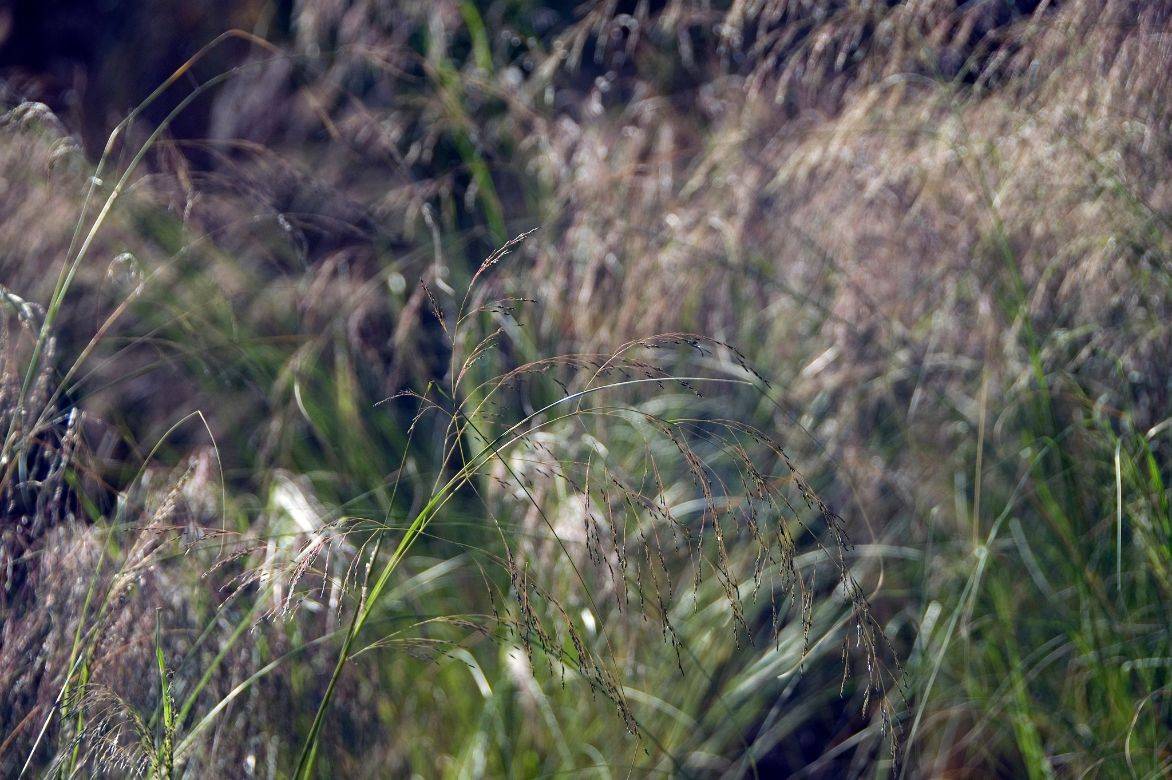
Eragrostis curvula
Multiplication
By sowing
The plant self-seeds, without ever becoming invasive, however. You can collect the young clumps of Eragrostis and move them in spring to the location that suits you.
Please note: if you do not want your grasses to self-seed, cut the flowering stems after flowering!
Sowing is possible under a cold frame in early spring (March). Sow in a substrate that is half compost and half sand, kept moist (watered, but not excessively). The young clumps can already be transplanted into their final position by May or June.
By dividing clumps
Dividing large clumps is done in spring, between April and June. Lift the clump from the ground using a digging fork. Remove any dead or dry parts, then divide the clump with a knife or the edge of a spade. Even simpler, you can just separate the young clumps around the mother plant.
Association
The Love herb will be paired with plants that thrive under the same growing conditions: a very well-drained soil and full sun exposure.
In a dry rock garden
A few clumps of Eragrostis spectabilis ‘Great Plains’ (Eragrostis spectabile) will add lightness and height to a carpet of Delosperma cooperi with mauve flowers that bloom from spring to late summer. The lovely pink flowering of the creeping Sedum ‘Sunsparkler Lime Zinger’ will echo the pink of the Eragrostis inflorescence. Two or three Salvia greggii ‘Arctic Blaze Purple’ won’t go amiss and will provide us with flowering that spreads from May to October. Lastly, a few Mexican fleabane will fill the gaps in the rock garden by self-seeding abundantly (a trait shared with the grass).
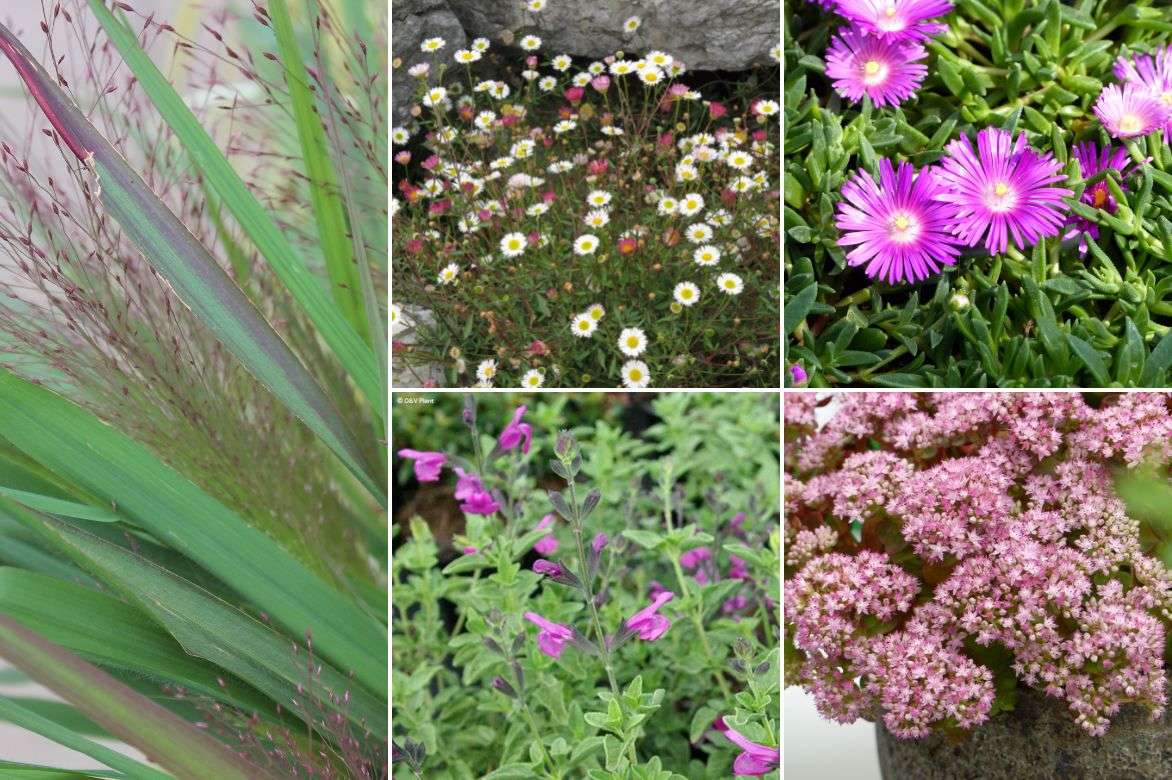
Eragrostis ‘Great Plains’, Erigeron karvinskianus, Delosperma cooperii, Salvia gregii ‘Arctic Blaze Purple’, and Sedum ‘Sunsparkler Lime Zinger’
In a wildflower meadow at the end of the season
The idea is to create an area that looks as natural as possible, thanks to a few structural grasses with soft, airy flowering, along with some tall perennials with a “wild” appearance. Of course, this isn’t a copy of what you might find in nature, but rather an idealised version of an American prairie.
A few clumps of Eragrostis trichodes will happily accompany some Muhlenbergia capillaris, another American grass. It’s best to limit the number of different grass species to maintain clarity in the “meadow.” For flowering perennials, we’ll keep it simple and effective: Gaura lindheimeri ‘Summer Breeze’ (recently renamed by botanists as Oenothera lindheimeri) and Purpletop vervain. The plant selection is deliberately limited for a more natural look, and of course, all the suggested plants are native to the American continent, love the sun, and withstand drought wonderfully.
Anecdotes
Eragrostis curvula is used in the United States to stabilise slopes along roads or railways.
Teff, a species of the genus Eragrostis (Eragrostis tef), is cultivated in the mountains of Ethiopia. This grass produces small grains and is the primary food source for the local population. Attempts to replace teff with maize or wheat have ended in dismal failure: neither can tolerate drought or, paradoxically, intermittently waterlogged soil.
Useful resources
Find our Eragrostis or Love grasses in our online nursery.
- Subscribe!
- Contents



































Comments